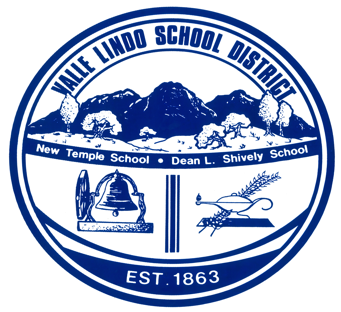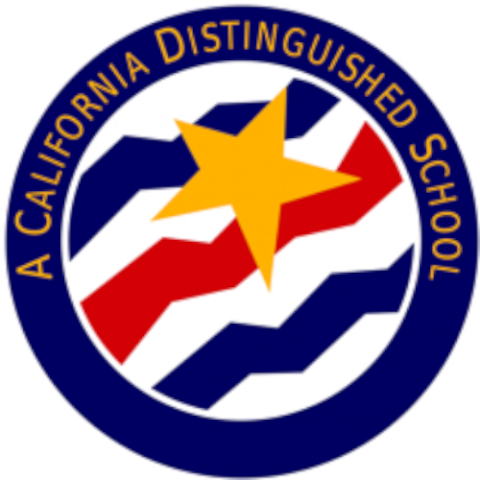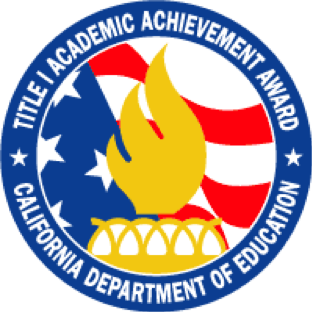Commitment to Excellence

WELCOME TO VALLE LINDO
Established in 1863, this District of two schools is the third oldest district in the state, rich in history and accomplishments.
Both New Temple Elementary School and Dean L. Shively Middle School have received recognitions for their award winning programs.
Step 1: Student assessment data in math and Language Arts is disaggregated. Data includes local and statewide assessments. The goal for students is academic proficiency in ELA and math and to close the achievement gap for the 84% Socioeconomically Disadvantaged and 95% Hispanic New Temple students. LCAP Goal 2 provides teachers time to analyze data.
Step 2: Teacher teams plan a 36-week instructional calendar. Teachers meet weekly to refine the instructional calendar and plan for differentiated instruction. LCAP Goal 3 requires curriculum development and time for collaboration.
Step 3: Students engage in learning that is focused on standards-based curriculum.
Step 4: Standards mastery is assessed using local and statewide assessments. LCAP Goal 4 requires all students participate in these assessments.
Step 5: Student needs are met through extended learning time. Remediation is provided through tutorials in reading, mathematics, and academic language development and summer school.
Step 6: Student needs are met through extended learning time. Acceleration is provided through before school, after school, and summer school programs including GATE, Robotics, and Coding.
Step 7: Teachers ensure students maintain mastered skills by providing on-going review and reinforcement lessons.
Step 8: Administration monitors, trains, and equips teachers with tools to help students master the standards. Teacher leaders provide training in topics such as: implementation of CCSS; differentiating instruction; technology integration; and promoting a positive school culture and climate. The goal for teachers is professional development for continuous improvement. LCAP Goal 2 requires professional development, and instructional support for implementation.
Step 9: Student connectivity is achieved through meeting the social-emotional needs of students. New Temple’s implementation of the program is unique and distinguished in the district as it integrates thematic character education, such as personal responsibility and social skills development within the standards based curriculum. LCAP Goal 5 addresses student engagement.
The strategic implementation of the Nine Steps to Success has resulted in New Temple students outperforming both Los Angeles County and the State of California on the 2017 CAASPP (ELA scores = 55% New Temple, 47% Los Angeles, 48% California; mathematics scores = 47% New Temple, 36% Los Angeles, 38% California). In addition to academic achievement, the efforts made to meet the social and emotional needs of students have resulted in New Temple Elementary School earning recognition as a Capturing Kids’ Hearts National Showcase School.
Data drives classroom instruction. Student assessment results are routinely disaggregated and teachers meet weekly to analyze data, discuss factors that may be impacting student achievement, and monitor student progress.
Teachers customize student learning experiences by providing support and enrichment. Students are provided with intervention and acceleration based on ability level. Teachers adjust and refine classroom instruction to meet each student's unique learning needs.
WICOR (Writing, Inquiry, Collaboration, Organization, Reading) is incorporated in all classrooms. Teachers use a combination of small learning groups, direct instruction, flipped instruction and project-based learning models to enhance instruction.
Shively has been recognized as a California Gold Ribbon School, California Distinguished School and an AVID Schoolwide Site of Distinction, as well as the recipient of many awards, including the Title I Academic Achievement Award, California School Boards Association Golden Bell Award and California Business Council Excellence in Education Award.
It is the mission of the Valle Lindo School District
that all students realize their maximum potential;
empowering them to be challenged intellectually,
physically fit, socially responsible and culturally sensitive.
We are proud of our award-winning schools!

California Distinguished Schools
“honors California's most exemplary and inspiring public schools. Schools selected for the
Distinguished School Award demonstrate significant gains in narrowing the achievement gap.”

California Gold Ribbon Schools
“honors California's outstanding public schools. Schools that are selected
demonstrate exemplary achievements in implementing state standards in priority areas.”

Title I Academic Achievement Award
“honors Title I schools that have demonstrated success in significantly closing
the achievement gap between high and low-performing students.”

California School Boards Association Golden Bell Award
“recognizing achievements in improving PreK-12 education in California”
Outstanding Co-Curricular Program: “Engage, Perform, Inspire, Connect”
Outstanding Curriculum - Science: “Zingy Science”
Outstanding SAF Program: “Eight Building Blocks of Character Education”
Outstanding Bridging the Achievement Gap Program: “Closing the Gap in Student Achievement”

Capturing Kids Hearts National Showcase Schools
https://flippengroup.com/education-solutions/where-it-works/
“recognizing outstanding school administrators, teaching staff, and faculty for
producing exemplary outcomes with the Capturing Kids’ Hearts process.”

AVID Schoolwide Site of Distinction
Dean L. Shively Middle School has been recognized nationally as an
AVID Schoolwide Site of Distinction.
“AVID’s mission is to close the achievement gap by preparing
all students for college readiness and success in a global society.”

Campaign for Business & Education Excellence Star Honor Roll
https://dataportal.edresults.org/Metrics/HonorRoll
“The ERP Honor Roll program recognizes schools and districts that consistently
demonstrate high levels of student achievement and reduction in achievement gaps.
The program allows educators, school leaders, and policymakers to identify successful peers and
learn from effective practices and strategies.”
